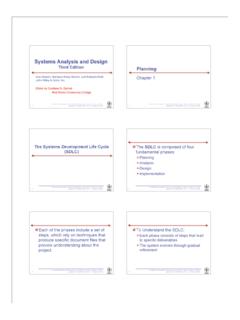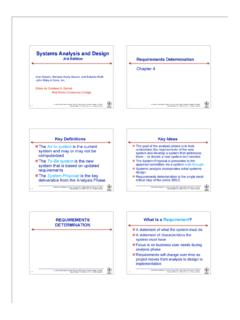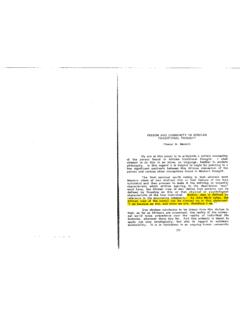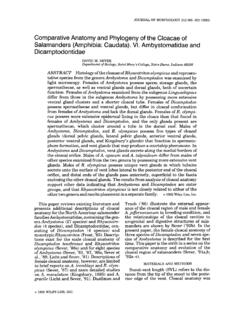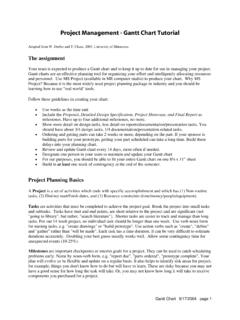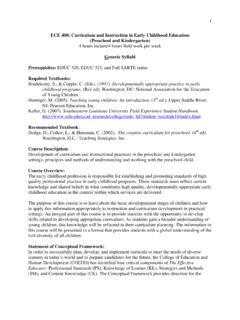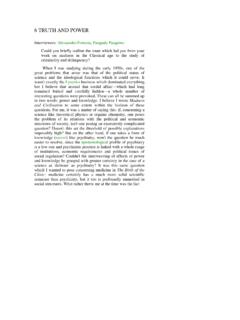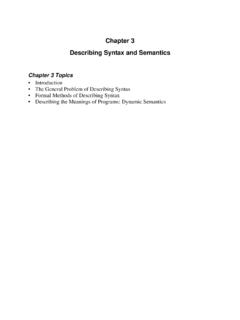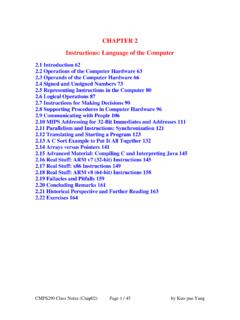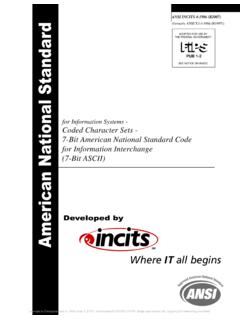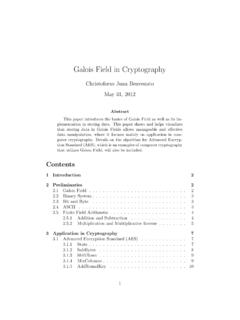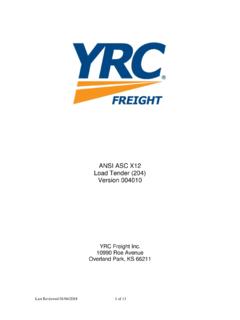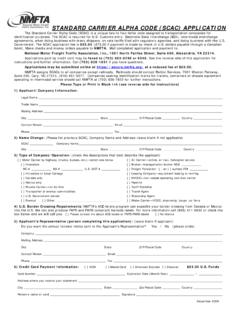Transcription of Chapter 6 Data Type
1 Chapter 6 Data Type Chapter 6 Topics Introduction Primitive Data Types Character String Types User-Defined Ordinal Types Array Types Associative Arrays Record Types Union Types Pointer and Reference Types Chapter 6 Data Type Introduction A data type defines a collection of data objects and a set of predefined operations on those objects. Computer programs produce results by manipulating data. ALGOL 68 provided a few basic types and a few flexible structure-defining operators that allow a programmer to design a data structure for each need.
2 A descriptor is the collection of the attributes of a variable. In an implementation a descriptor is a collection of memory cells that store variable attributes. If the attributes are static, descriptor are required only at compile time. They are built by the compiler, usually as a part of the symbol table, and are used during compilation. For dynamic attributes, part or all of the descriptor must be maintained during execution. Descriptors are used for type checking and by allocation and deallocation operations. Primitive Data Types Those not defined in terms of other data types are called primitive data types.
3 The primitive data types of a language, along with one or more type constructors provide structured types. Numeric Types 1. Integer Almost always an exact reflection of the hardware, so the mapping is trivial. There may be as many as eight different integer types in a language. Java has four: byte, short, int, and long. Integer types are supported by the hardware. 2. Floating-point Model real numbers, but only as approximations for most real values. On most computers, floating-point numbers are stored in binary, which exacerbates the problem.
4 Another problem is the loss of accuracy through arithmetic operations. Languages for scientific use support at least two floating-point types; sometimes more ( float, and double.) The collection of values that can be represented by a floating-point type is defined in terms of precision and range. Precision: is the accuracy of the fractional part of a value, measured as the number of bits. Figure below shows single and double precision. Range: is the range of fractions and exponents. 3. Decimal Most larger computers that are designed to support business applications have hardware support for decimal data types.
5 Decimal types store a fixed number of decimal digits, with the decimal point at a fixed position in the value. These are the primary data types for business data processing and are therefore essential to COBOL. Advantage: accuracy of decimal values. Disadvantages: limited range since no exponents are allowed, and its representation wastes memory. Boolean Types Introduced by ALGOL 60. They are used to represent switched and flags in programs. The use of Booleans enhances readability. One popular exception is C89, in which numeric expressions are used as conditionals.
6 In such expressions, all operands with nonzero values are considered true, and zero is considered false. Character Types Char types are stored as numeric codings (ASCII / Unicode). Traditionally, the most commonly used coding was the 8-bit code ASCII ( american Standard code for information interchange ). A 16-bit character set named Unicode has been developed as an alternative. Java was the first widely used language to use the Unicode character set. Since then, it has found its way into JavaScript and C#. Character String Types A character string type is one in which values are sequences of characters.
7 Important Design Issues: 1. Is it a primitive type or just a special kind of array? 2. Is the length of objects static or dynamic? C and C++ use char arrays to store char strings and provide a collection of string operations through a standard library whose header is How is the length of the char string decided? The null char which is represented with 0. Ex: char *str = apples ; // char ptr points at the str apples0 In this example, str is a char pointer set to point at the string of characters, apples0, where 0 is the null char. String Typical Operations: Assignment Comparison (=, >, etc.)
8 Catenation Substring reference Pattern matching Some of the most commonly used library functions for character strings in C and C++ are o strcpy: copy strings o strcat: catenates on given string onto another o strcmp: lexicographically compares (the order of their codes) two strings o strlen: returns the number of characters, not counting the null In Java, strings are supported as a primitive type by String class String Length Options Static Length String: The length can be static and set when the string is created.
9 This is the choice for the immutable objects of Java s String class as well as similar classes in the C++ standard class library and the .NET class library available to C#. Limited Dynamic Length Strings: allow strings to have varying length up to a declared and fixed maximum set by the variable s definition, as exemplified by the strings in C. Dynamic Length Strings: Allows strings various length with no maximum. Requires the overhead of dynamic storage allocation and deallocation but provides flexibility. Ex: Perl and JavaScript. Evaluation Aid to writability.
10 As a primitive type with static length, they are inexpensive to provide--why not have them? Dynamic length is nice, but is it worth the expense? Implementation of Character String Types Static length - compile-time descriptor has three fields: 1. Name of the type 2. Type s length 3. Address of first char Compiler-time descriptor for static strings Limited dynamic length Strings - may need a run-time descriptor for length to store both the fixed maximum length and the current length (but not in C and C++ because the end of a string is marked with the null character).
